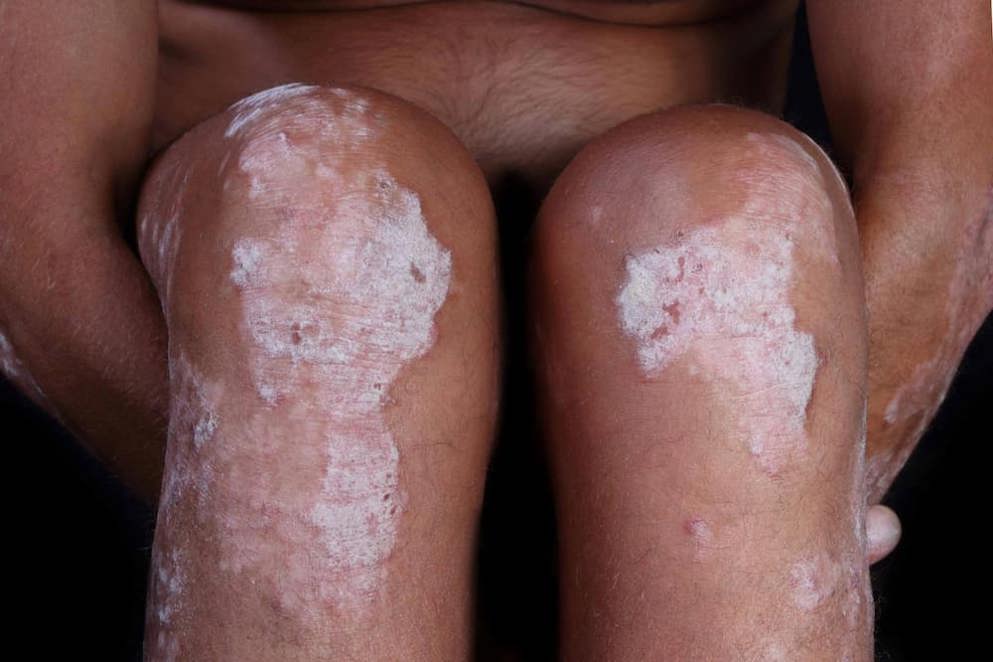First presentation at AAD meeting of four-year Bimzelx (bimekizumab-bkzx) data showed long-term maintenance of complete skin clearance in moderate to severe plaque psoriasis.- UCB
UCB, a global biopharmaceutical company, announced that the first presentations of Bimzelx (bimekizumab-bkzx) four-year efficacy and safety data in the treatment of adults with moderate to severe plaque psoriasis are being shared this week at the 2024 American Academy of Dermatology (AAD) Annual Meeting in San Diego, California, U.S., March 8–12.
“We are proud to debut the Bimzelx four-year psoriasis data at the world’s largest dermatology meeting, showing that the majority of adult patients treated with bimekizumab-bkzx achieved deep and durable clinical response through four years, with a consistent tolerability profile. These results, from the largest pool of Phase III data, closely follow the U.S. launch, and reinforce our belief that Bimzelx has the potential to transform the lives of people with moderate to severe plaque psoriasis,” said Emmanuel Caeymaex, Executive Vice President, Immunology Solutions and Head of U.S., UCB.
<“moderate to severe plaque psoriasis is a chronic condition with physical skin manifestations that can place a significant burden on a patient’s health-related quality-of-life. analysis shows that through four years of bimekizumab-bkzx treatment, over six out of ten patients achieved and maintained complete skin clearance, a clinically meaningful endpoint and outcome for patients. these long-term data will be highly welcomed by the dermatology community since they provide important considerations for clinical practice,” said dr. bruce strober, clinical professor of dermatology at yale university, and central connecticut dermatology, connecticut, u.s.></“moderate>
The late-breaking platform presentation shared bimekizumab-bkzx pooled data from treatment initiation through four years, showing that high rates of clinical and health-related quality-of-life responses were rapidly achieved and were maintained in the long term. Responder-analyses showed that approximately nine out of ten patients treated with bimekizumab-bkzx who achieved greater than 90 percent improvement from baseline in the Psoriasis Area Severity Index (PASI90) and over seven out of ten patients who achieved complete skin clearance (PASI100) at Week 16 maintained their responses to Year 4. Pooled analysis from five Phase III/IIIb studies showed that bimekizumab-bkzx demonstrated good tolerability and a consistent safety profile with no new safety findings identified up to four years in patients with moderate to severe plaque psoriasis.
Highlights from the four-year bimekizumab-bkzx data in moderate to severe plaque psoriasis presented at the 2024 AAD .: 1.Treatment initiation through four years : Data were pooled across the 52-week BE VIVID study, the 56-week BE READY and BE SURE studies and their open-label extension (OLE Week 144) BE BRIGHT. Analyzed patients were randomized to bimekizumab-bkzx 320 mg every four weeks (Q4W) to Week 16, then bimekizumab-bkzx Q4W or Q8W until OLE entry. Clinical and health-related quality of life (PASI90 and PASI100, body surface area [BSA] less than 1 percent and Dermatology Life Quality Index [DLQI]0/1) responses were assessed through to Year 4 (OLE Week 144) Data are presented below for all patients who received bimekizumab-bkzx continuously from baseline and entered the OLE (n=771) : i. 90.9 percent achieved PASI90 at Week 16, and 86.1 percent through to Year 4., ii. 65.8 percent achieved PASI100 at Week 16, and 64.7 percent through to Year 4. iii. 78.5 percent achieved BSA less than 1 percent at Week 16, and 79.8 percent through to Year 4. iv. 71.5 percent achieved DLQI0/1 at Week 16, and 78.7 percent through to Year 4.
2.Responder analysis to Year 4 : Patients who completed the BE VIVID, BE SURE and BE READY Phase III studies could enter the BE BRIGHT OLE. Analyzed patients were randomized to bimekizumab-bkzx 320 mg Q4W to Week 16, then bimekizumab-bkzx Q4W or Q8W until OLE entry, then bimekizumab-bkzx Q4W or Q8W dependent on PASI response/prior dose. Maintenance of PASI90 and PASI100 was assessed in Week 16 responders to Year 4 (OLE Week 144) and is presented below for all patients: i. 87.7 percent who achieved PASI90 at Week 16 (n=693) maintained their response to Year 4. ii. 73.3 percent who achieved PASI100 at Week 16 (n=503) maintained their response to Year 4.
3.Safety and tolerability through four years : Data were pooled across the 52-week BE VIVID study, the 56-week BE READY and BE SURE studies, and the OLE studies BE BRIGHT and BE RADIANT. The total bimekizumab-bkzx exposure was 6,324.3 patient-years (PY) across the studies (n=2,186) Exposure-adjusted incidence rates (EAIRs) of treatment-emergent adverse events (TEAEs) remained consistent or decreased with longer bimekizumab-bkzx exposure. Overall, TEAEs occurred at an EAIR of 170.5/100 PY and serious TEAEs at 5.5/100 PY. The most common TEAEs were nasopharyngitis (12.7/100 PY), oral candidiasis (8.9/100 PY), and upper respiratory tract infections (5.7/100 PY). Oral candidiasis decreased from 18.9/100 PY at Year 1 to 5.4/100 PY at Year 4.. Throughout, fewer TEAEs occurred with bimekizumab-bkzx every 8 weeks (Q8W) (115.4/100 PY) vs. every 4 weeks (Q4W) (224.4/100 PY).

